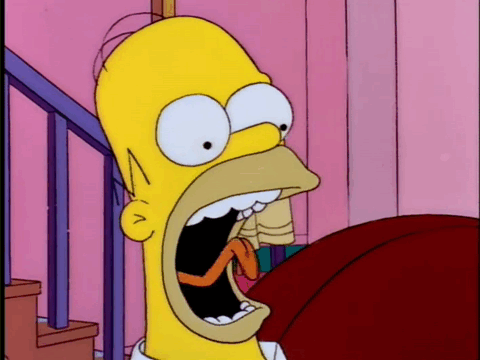- Welcome to Cook'd and Bomb'd.
-
 Gold orders Bottom Exposed...
by dead-ced-dead
Gold orders Bottom Exposed...
by dead-ced-dead
[Today at 03:01:50 PM] -
 Saint fackin Georg
by jamiefairlie
Saint fackin Georg
by jamiefairlie
[Today at 03:01:35 PM] -
 Snooker 23/24
by Norton Canes
Snooker 23/24
by Norton Canes
[Today at 03:01:03 PM] -
 Who are you voting for in...
by Buelligan
Who are you voting for in...
by Buelligan
[Today at 03:00:22 PM] -
 Pubs then
by poodlefaker
Pubs then
by poodlefaker
[Today at 02:57:24 PM] -
 Trans Mania: Graham Linehan...
by Catalogue Trousers
Trans Mania: Graham Linehan...
by Catalogue Trousers
[Today at 02:57:15 PM] -
 Obnoxiously American words...
by jamiefairlie
Obnoxiously American words...
by jamiefairlie
[Today at 02:54:55 PM] -
 How long for the ice cream...
by Mr Banlon
How long for the ice cream...
by Mr Banlon
[Today at 02:50:51 PM] -
 I have never listened to the...
by The Mollusk
I have never listened to the...
by The Mollusk
[Today at 02:48:19 PM] -
 The new "What Stand Up...
by Memorex MP3
The new "What Stand Up...
by Memorex MP3
[Today at 02:48:14 PM]
Members
 Total Members: 17,826
Total Members: 17,826 Latest: bozza
Latest: bozza
Stats
 Total Posts: 5,581,509
Total Posts: 5,581,509 Total Topics: 106,719
Total Topics: 106,719 Online Today: 871
Online Today: 871 Online Ever: 3,311
Online Ever: 3,311- (July 08, 2021, 03:14:41 AM)
Users Online
 Users: 130
Users: 130 Guests: 639
Guests: 639 Total: 769
Total: 769 Buelligan
Buelligan Ruben Remus
Ruben Remus Senior Baiano
Senior Baiano Adrian Brezhnev
Adrian Brezhnev Theoretical Dentist
Theoretical Dentist Norton Canes
Norton Canes Gambrinus
Gambrinus Angst in my Pants
Angst in my Pants Kenkun
Kenkun Uncle TechTip
Uncle TechTip Stone Cold Steve Austin
Stone Cold Steve Austin FredNurke
FredNurke Heid The Baw
Heid The Baw JaDanketies
JaDanketies iamcoop
iamcoop ramsobot
ramsobot Catalogue Trousers
Catalogue Trousers perplexingprocrastinator
perplexingprocrastinator George White
George White Funcrusher
Funcrusher lebowskibukowski
lebowskibukowski Shaky
Shaky Dandy21
Dandy21 RicoMNKN
RicoMNKN Natnar
Natnar dead-ced-dead
dead-ced-dead jamiefairlie
jamiefairlie This isnt witty sorry
This isnt witty sorry JimminyJillikers
JimminyJillikers Pavlov`s Dog`s Dad`s Dead
Pavlov`s Dog`s Dad`s Dead dinglebonce
dinglebonce samadriel
samadriel Mister Six
Mister Six Bartholomew J Krishna
Bartholomew J Krishna phantom_power
phantom_power fuzzyste
fuzzyste lankyguy95
lankyguy95 sprocket
sprocket Petey Pate
Petey Pate Solid Jim
Solid Jim LordMorgan
LordMorgan no_offenc
no_offenc The Roofdog
The Roofdog hcrumble
hcrumble markburgle
markburgle Psybro
Psybro Wezzo
Wezzo SteveDave
SteveDave Tiggles
Tiggles Mr Farenheit
Mr Farenheit Sarnie Rudeboy
Sarnie Rudeboy DelurkedToHelp
DelurkedToHelp ros vulgaris
ros vulgaris Deano
Deano What Doth Life?
What Doth Life? buttgammon
buttgammon BeardFaceMan
BeardFaceMan Jittlebags
Jittlebags Huxleys Babkins
Huxleys Babkins The Giggling Bean
The Giggling Bean Zetetic
Zetetic Underturd
Underturd mattyc
mattyc druss
druss crankshaft
crankshaft filth gabs
filth gabs Armin Meiwes
Armin Meiwes thevoola
thevoola Dr Rock
Dr Rock Elderly Sumo Prophecy
Elderly Sumo Prophecy sevenism
sevenism steve98
steve98 burst_arm
burst_arm KennyMonster
KennyMonster StooeyGK
StooeyGK Kankurette
Kankurette Bunty Levert
Bunty Levert Lieutenant Longstay
Lieutenant Longstay chopper
chopper Jumblegraws
Jumblegraws cptpunk
cptpunk chutnut
chutnut Dr Trouser
Dr Trouser Bleeding Kansas
Bleeding Kansas Cuntbeaks
Cuntbeaks Nibbsy
Nibbsy mrpupkin
mrpupkin Action Fish
Action Fish Imperator Helvetica
Imperator Helvetica Voltan (Man of Steel)
Voltan (Man of Steel) The Crumb
The Crumb katzenjammer
katzenjammer Magnum Valentino
Magnum Valentino Ron Maels Moustache
Ron Maels Moustache Toxteth OGrady
Toxteth OGrady shoulders
shoulders bobloblaw
bobloblaw brat-sampson
brat-sampson Memorex MP3
Memorex MP3 thugler
thugler Beelog
BeelogEarly days of digital film
Started by peanutbutter, January 22, 2022, 01:32:01 PM
Previous topic - Next topic
User actions

